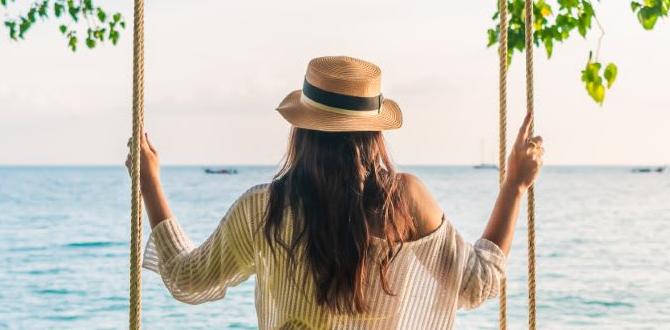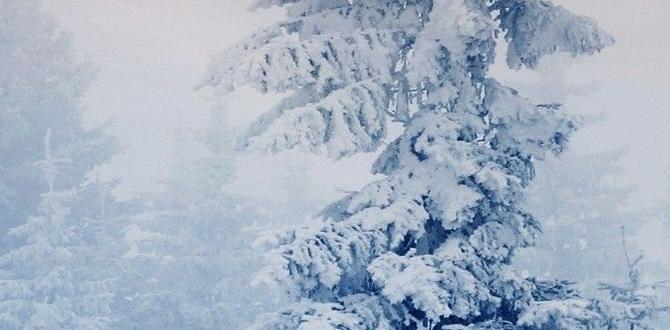A Botswana road trip base guide simplifies planning by covering essential tips for vehicles, accommodation, safety, and packing. With the right preparation, you can navigate Botswana’s stunning landscapes confidently for an unforgettable adventure.
Planning a Botswana road trip can feel like a big undertaking, especially if it’s your first time. You might wonder about the best vehicle for the job, where to stay between game drives, or how to stay safe in the wild. It’s completely normal to have these questions! The thrill of exploring Botswana’s vast deserts and abundant wildlife is immense, but a little upfront knowledge goes a long way to ensure a smooth and enjoyable journey. This guide is here to break down everything you need to know to build a solid foundation for your Botswana road trip, making it less overwhelming and more exciting. We’ll cover the essentials, from choosing your wheels to packing smart, so you can focus on the magic of Botswana.
Your Botswana Road Trip Base: Essential Tips for a Smooth Adventure
Embarking on a Botswana road trip is an experience like no other, offering a chance to witness incredible wildlife and breathtaking landscapes. But before you hit the road, having a solid “base” strategy is crucial. This doesn’t just mean a place to sleep; it encompasses your vehicle, your itinerary, your supplies, and your peace of mind. Think of your road trip base as the foundation upon which all your amazing memories will be built.
1. Choosing Your Safari Vehicle: The Gateway to Exploration
The vehicle you choose is your most important companion on a Botswana road trip. It needs to be robust, reliable, and capable of handling diverse terrains, from tarmac to sandy tracks. For most adventurous travelers looking to explore national parks and reserves, a 4×4 (four-wheel drive) is highly recommended.
Why a 4×4 is Your Best Friend:
- Tackling Rough Terrain: Many roads in Botswana, especially within national parks, can be sandy, corrugated, or simply unpaved. A 4×4 with good ground clearance will navigate these conditions far more easily and safely than a standard vehicle.
- Access to Remote Areas: If your itinerary includes venturing off the main routes or reaching more secluded campsites, a 4×4 provides the necessary traction and robustness.
- Peace of Mind: Knowing your vehicle can handle what the roads throw at it significantly reduces stress and allows you to immerse yourself in the experience.
Vehicle Rental Considerations:
Hiring a vehicle is a popular and often practical choice. When renting, look for reputable companies that specialize in safari vehicles. Here’s what to check:
- Vehicle Type: Opt for a 4×4, often a Toyota Land Cruiser or similar, known for its durability in African conditions.
- Camping Equipment: Many rental companies offer vehicles already kitted out with camping gear, including roof tents, swags, cooking equipment, and sometimes even a fridge. This can be a huge convenience.
- Insurance: Understand the insurance coverage thoroughly. Ensure it includes breakdown assistance and covers driving on unpaved roads.
- Fuel Range: Inquire about the vehicle’s fuel capacity and confirm where you can refuel along your planned route.
- Spare Tires: Ensure the vehicle comes with at least one, preferably two, full-sized spare tires and the tools to change them.
For those considering purchasing a vehicle for regular trips, looking into vehicles like the Toyota Hilux or Land Cruiser is a sound investment due to their proven track record in harsh environments. Researching specific fuel efficiency and maintenance costs for models you’re considering is also wise.
2. Accommodation Options: From Wild Campsites to Comfortable Lodges
Your accommodation strategy is key to enjoying your downtime and recharging for the next day’s adventures. Botswana offers a spectrum of options, catering to different budgets and travel styles.
Camping: Embracing the Wild
Camping is synonymous with a true Botswana safari. This can range from basic, unfenced campsites in national parks to more equipped private sites.
- National Park Campsites: These are often basic, offering a designated spot to pitch a tent or park a vehicle, sometimes with a long-drop toilet and a fire pit. You are truly in the wilderness here, so animal encounters are common – and thrilling!
- Private Campsites: Often located just outside national parks or in private concessions, these can offer more amenities like flushing toilets, showers (sometimes hot), and cleaner facilities.
- Self-Catering Facilities: Many campsites provide braai (barbecue) areas, and some have basic cooking shelters.
Booking Tip: Campsites in popular national parks like Chobe and Moremi often need to be booked months in advance, especially during peak season. The Botswana Parks and Tourism Board’s official booking portal is the place to do this.
Lodges and Guesthouses: Comfort and Convenience
If camping isn’t your style, or you’re looking for a comfortable base between drives, lodges and guesthouses offer a welcome respite.
- Inside National Parks: These lodges provide stunning locations and the convenience of being right in the heart of the wildlife action. They typically offer full board and guided activities.
- Just Outside Parks: Many towns and settlements on the periphery of national parks have lodges and guesthouses. These can be more affordable and offer a good base for day trips into the parks, particularly if you have your own vehicle.
- Urban Centers: Larger towns like Maun and Kasane offer a wider range of hotels and guesthouses, convenient for stocking up on supplies and for pre- or post-safari stays.
Mokoro Station Stays: A Unique Experience
For an immersive experience, consider a night or two at a mokoro station, often found in the Okavango Delta periphery. These usually involve sleeping in simple tents or bandas and experiencing the delta by mokoro (traditional dugout canoe) guided by local polers.
3. Essential Packing List: Beyond the Basics
Packing wisely can make or break your Botswana road trip. Focus on items that are versatile, durable, and practical for the specific environment.
Clothing:
- Lightweight, Breathable Fabrics: Cotton, linen, and performance synthetics are best for the heat.
- Neutral Colors: Earthy tones like khaki, brown, and green are ideal for wildlife viewing as they blend into the environment. Avoid bright colors.
- Layers: Evenings and early mornings can be surprisingly cool, especially in the cooler months (May-August). Pack a fleece jacket or warm sweater.
- Long Sleeves and Trousers: Essential for sun protection and to ward off insects, especially at dawn and dusk.
- Comfortable Walking Shoes: For around camps and light walks.
- Sandals or Flip-Flops: For relaxing at the campsite or lodge.
- Hat: A wide-brimmed hat is crucial for sun protection.
- Swimsuit: For lodges with pools or specific swimming spots.
Gear & Equipment:
- Binoculars: Absolutely essential for wildlife spotting.
- Camera with Zoom Lens: To capture those incredible moments.
- Sunscreen: High SPF, waterproof.
- Insect Repellent: With DEET or Picaridin.
- First-Aid Kit: Comprehensive, including any personal medications.
- Headlamp or Flashlight: Essential for navigating camps after dark.
- Power Bank/Solar Charger: For keeping electronics charged when away from power sources.
- Reusable Water Bottles: Stay hydrated and reduce plastic waste.
- Cooler Box: Crucial for keeping food and drinks fresh, especially if not renting a vehicle with a fridge.
- Camping Chairs: For comfortable lounging at the campsite.
- Dry Bags: To protect electronics and valuables from dust and moisture.
Documents & Essentials:
- Passport and Visas: Ensure they are valid for your stay.
- Driver’s License: And an International Driving Permit if required.
- Vehicle Rental Documents.
- Travel Insurance Details.
- Cash: For smaller purchases at remote stops, park entry fees where cards aren’t accepted, and tips.
- Map and Compass/GPS: Don’t rely solely on phone signal.
Special Considerations: For travelers who require them, discreet and comfortable adult or child diapers can provide an extra layer of security and freedom, particularly during long drives or when facilities are scarce. Brands offering high absorbency and breathability are recommended for maximum comfort. Packing a few extra in a waterproof bag is a prudent step for peace of mind.
4. Road Conditions and Navigation: Staying on Track
Botswana’s road network varies significantly. Understanding what to expect is vital for safe and efficient travel.
Road Types:
- Tarmac Roads: The main routes connecting larger towns are generally well-maintained tarmac.
- Gravel Roads: These are common between towns and leading into park gates. They can be smooth or corrugated, often dusty, and speed needs to be adjusted accordingly.
- Sand Tracks: Within national parks and reserves, many tracks are deep sand. This is where a 4×4 is indispensable. Driving in sand requires specific techniques: maintain momentum, avoid sharp turns, and drive with tire pressure reduced if necessary (but never below recommended levels for your tire type).
- Mud/Water Crossings: During the wet season (roughly November to April), some tracks can become impassable due to mud or water. Always assess water crossings carefully before attempting them. If in doubt, don’t ford it.
Navigation Tools:
- GPS Device or App: While phone signal can be patchy, a good GPS device or an offline map app (like Maps.me or Google Maps with downloaded areas) is invaluable.
- Paper Maps: Always carry a good physical road map of Botswana as a backup.
- Park Guides: If available, these can offer specific route information within parks.
- Ask Locally: Camp managers, rangers, and other travelers are excellent sources of current road condition information.
It’s important to note that many park roads are not clearly signposted. A good set of maps and a willingness to explore are your best guides. For a deeper understanding of road rules and driving in Botswana, the Botswana Travel Service often provides excellent advice.
5. Safety and Security: Staying Aware in the Wilderness
Botswana is generally a safe country for tourists, but like anywhere, common sense and awareness are important, especially when you’re in remote areas surrounded by wildlife.
Wildlife Safety:
- Maintain Distance: Never approach or feed wild animals. Observe them from the safety of your vehicle or a designated viewing point.
- Stay in Your Vehicle: When driving through parks, remain inside your vehicle unless you are at a designated picnic or campsite.
- Be Cautious at Night: Drive slowly and with headlights on, being aware of animals that may cross the road. Avoid driving after dark if possible, especially outside of well-maintained roads.
- Camp Safety: Ensure your campsite is secure. Store food properly to avoid attracting animals. Never walk around camp at night without a light. Be aware of your surroundings.
Personal Security:
- Valuables: Keep an eye on your belongings, especially in towns or crowded areas. When camping, store valuables out of sight in your locked vehicle.
- Communication: Let someone know your itinerary and expected arrival times. Mobile phone reception is unreliable in many areas. Consider a satellite phone for remote travel.
- Health: Consult your doctor about necessary vaccinations and malaria prophylaxis before your trip. Carry a well-stocked first-aid kit.
The Botswana Department of Wildlife and National Parks provides guidelines for park visitors that are worth familiarizing yourself with. Adhering to these rules ensures your safety and the preservation of Botswana’s incredible natural heritage.
6. Essential Supplies: Stocking Up for the Journey
Given the vast distances and limited facilities in many areas, stocking up on essentials before you set off is crucial.
Food and Drink:
- Water: This is paramount. Carry significantly more water than you think you’ll need, especially if traveling in the hotter months. Bottled water is readily available, but reusable containers filled from safe sources are more eco-friendly.
- Non-Perishable Food: Canned goods, pasta, rice, UHT milk, cereals, and long-life snacks are ideal.
- Perishable Food: If you have a cooler or fridge, opt for fresh produce that lasts well (e.g., potatoes, onions, fruits like apples and oranges) and items like cheese, cured meats, and eggs. Plan your meals to use up perishables first.
- Cooking Essentials: Cooking oil, salt, pepper, tea, coffee, sugar.
Vehicle Spares and Tools:
Beyond the basic toolkit, consider carrying:
- Extra fan belts
- Hoses
- Duct tape
- Straps
- Tire repair kit and pump
- Jumper cables
Refer to your rental company’s recommended spares list.
Fuel:
Fuel stops can be few and far between. Always try to fill up whenever you see a fuel station, even if your tank is not near empty. Research your route and identify fuel stops beforehand.
Having a comprehensive checklist and dedicating time to shopping and packing before you leave will significantly smooth your journey. It’s about being prepared so you can relax and enjoy the unfettered beauty of Botswana.
Building Your Botswana Road Trip Base: A Summary Table
To help you visualize the key elements of your road trip base, here’s a quick overview:
| Element | Key Considerations | Beginner Importance |
|---|---|---|
| Vehicle | 4×4, reliable, good ground clearance, adequate spares, insurance. | High – Crucial for access and safety. |
| Accommodation | Camping (basic/equipped), lodges, guesthouses. Book in advance. | Medium-High – Affects comfort and budget. |
| Navigation | GPS/offline maps, paper maps, local advice. Understand road types (sand, gravel). |
High – Prevents getting lost and ensures timely travel. |
| Safety | Wildlife distance, camp security, communication, health. | High – Paramount for well-being. |
| Supplies | Ample water, non-perishable food, fuel, basic medical kit. | High – Essential for self-sufficiency. |
Frequently Asked Questions (FAQs)
Q1: Do I need a 4×4 to drive in Botswana?
While not strictly mandatory for all routes connecting major towns, a 4×4 is highly recommended, almost essential, if you plan to explore national parks and reserves. Many internal park roads are sandy tracks that a standard 2WD vehicle cannot handle. A 4×4 significantly increases your access, safety, and comfort.
Q2: How far in advance should I book accommodation and car rentals?
For peak season (June to October) and popular national parks like Chobe and Moremi, booking accommodation and vehicle rentals at least 6-12 months in advance is strongly advised. For off-peak season or less popular areas, 3-6 months might suffice, but early booking is always best to secure availability and potentially better rates.
Q3: Is it safe to drive at night in Botswana?
It is generally not recommended to drive at night in Botswana, especially outside of main roads and national parks. The risk of encountering wildlife on the roads (which can cause serious accidents) is high, and road conditions may be poor and unlit. If you must drive after dark when camping, do so around your immediate campsite with extreme caution.
Q4: What are the biggest challenges of a Botswana road trip?
Key challenges include long driving distances between points of interest, potentially poor or sandy road conditions, limited fuel availability in remote areas, and the need for self-sufficiency in terms of supplies like water and food. Animal crossings and unpredictable weather (especially in the wet season) can also present challenges.
Q5: Can I use my phone for navigation, or do I need a separate GPS?
Mobile phone signal is very unreliable outside of towns. While you can download offline maps on apps like Google Maps or Maps.me, these are best complemented by




